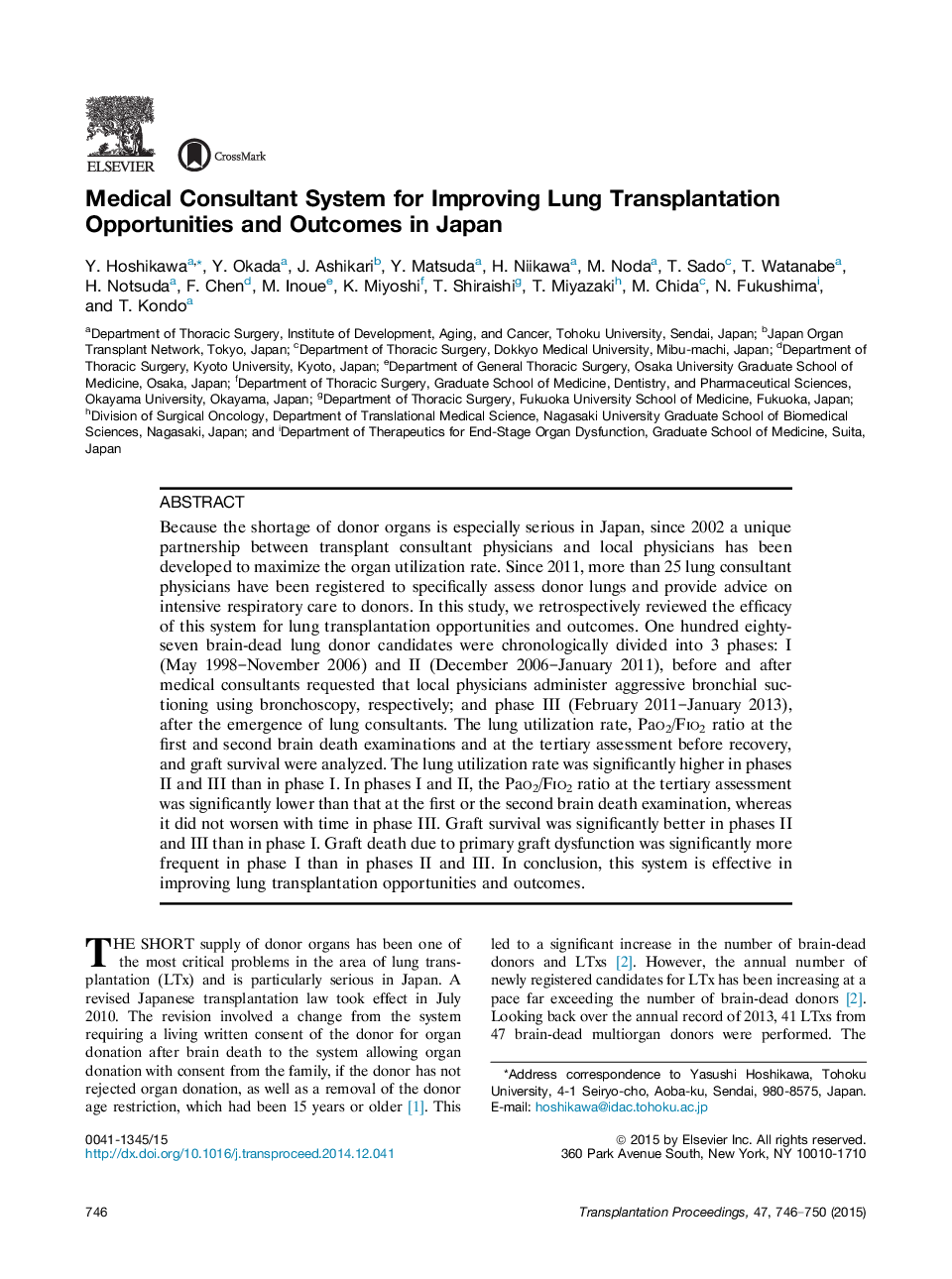| کد مقاله | کد نشریه | سال انتشار | مقاله انگلیسی | نسخه تمام متن |
|---|---|---|---|---|
| 6247872 | 1284520 | 2015 | 5 صفحه PDF | دانلود رایگان |
- A unique medical consultant system for donor lung assessment and management significantly improved lung utilization rate.
- Aggressive bronchial suctioning using bronchoscopy dramatically decreased graft death due to primary graft dysfunction and improved graft survival after lung transplantation.
- Intervention by lung consultant doctors prevents depression in oxygenation of donors with time.
Because the shortage of donor organs is especially serious in Japan, since 2002 a unique partnership between transplant consultant physicians and local physicians has been developed to maximize the organ utilization rate. Since 2011, more than 25 lung consultant physicians have been registered to specifically assess donor lungs and provide advice on intensive respiratory care to donors. In this study, we retrospectively reviewed the efficacy of this system for lung transplantation opportunities and outcomes. One hundred eighty-seven brain-dead lung donor candidates were chronologically divided into 3 phases: I (May 1998-November 2006) and II (December 2006-January 2011), before and after medical consultants requested that local physicians administer aggressive bronchial suctioning using bronchoscopy, respectively; and phase III (February 2011-January 2013), after the emergence of lung consultants. The lung utilization rate, Pao2/Fio2 ratio at the first and second brain death examinations and at the tertiary assessment before recovery, and graft survival were analyzed. The lung utilization rate was significantly higher in phases II and III than in phase I. In phases I and II, the Pao2/Fio2 ratio at the tertiary assessment was significantly lower than that at the first or the second brain death examination, whereas it did not worsen with time in phase III. Graft survival was significantly better in phases II and III than in phase I. Graft death due to primary graft dysfunction was significantly more frequent in phase I than in phases II and III. In conclusion, this system is effective in improving lung transplantation opportunities and outcomes.
Journal: Transplantation Proceedings - Volume 47, Issue 3, April 2015, Pages 746-750
